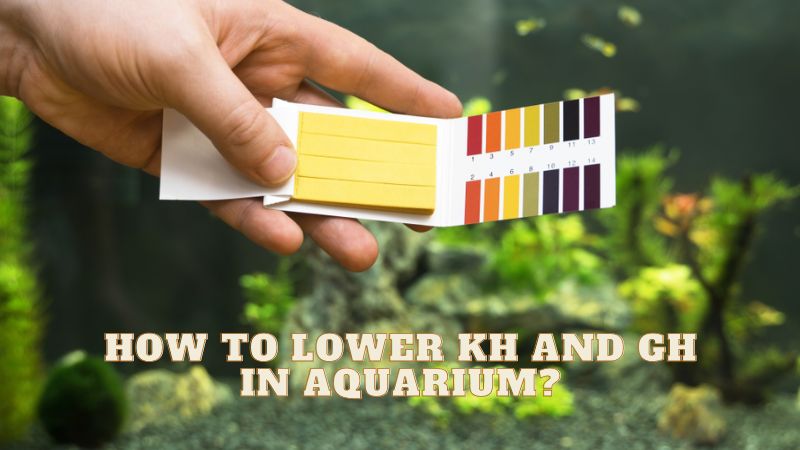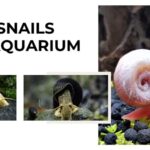Keeping your aquarium water’s chemistry balanced is essential for the health of your fish and plants. While KH and GH (carbonate hardness and general hardness) are important for maintaining stable water parameters, sometimes they can be too high for your specific fish or plant needs. So how to lower KH and GH in aquarium? Tropical Fish Haven will introduce to you effective methods to reduce KH and GH in your aquarium, ensuring a healthy and thriving aquatic environment.
pH (or Power of Hydrogen)
The pH scale quantifies the concentration of hydrogen ions in liquids, indicating whether a substance is acidic or basic. Pure water is neutral, with a pH of 7.0, on a scale ranging from 0 to 14. Liquids with a pH below 7.0, such as orange juice and vinegar, are acidic, while those with a pH above 7.0, like green tea and soap, are alkaline.
What pH Level is Best for Aquariums?
The majority of freshwater fish thrive within pH levels ranging from 6.5 to 8.0. Species such as South American fish and Caridina crystal shrimp typically prefer lower pH values, whereas African cichlids and livebearers prefer higher pH levels. While maintaining a precise pH isn’t usually crucial for casual fish keeping, it becomes more significant when attempting to breed specific fish and nurture their offspring.
How to Measure pH
The Aquarium Co-Op Multi-Test Strips feature a pH measurement test that we strongly recommend incorporating into your regular tank maintenance routine. It’s especially useful to test pH:
- When you’re aiming to maintain a specific pH level, particularly for breeding purposes.
- When troubleshooting health issues with your fish.
Signs that indicate you should check your aquarium’s pH include symptoms of stress in fish, such as frantic swimming, lethargy, rapid breathing, or unusual behavior, which can occur after a pH crash.
It’s important to note that pH levels in a fish tank naturally fluctuate throughout the day. The key goal is to keep pH relatively stable without sudden spikes, as most fish can adapt well under consistent conditions.
KH (or Carbonate Hardness)
KH, or carbonate hardness, quantifies the presence of carbonates and bicarbonates in water, influencing its buffering capacity. This buffering capacity helps stabilize pH by neutralizing acids, which is crucial in preventing rapid pH fluctuations that can harm fish health.
Low KH indicates limited buffering capacity, making the pH prone to swings. Conversely, high KH indicates strong buffering capacity, resulting in more stable pH levels that are resistant to change.
To illustrate, think of KH as a trash can: the higher the KH, the larger the trash can. If this “trash can” overflows, it leads to a pH crash. Therefore, aquarists with low KH in their tap water often use crushed coral to gradually increase KH (or expand their “trash can”), thereby guarding against pH crashes and maintaining stable water conditions for their fish.
What is the Optimal KH Level for Aquariums?
KH, measured in dKH (degrees of KH) or ppm (parts per million), plays a crucial role in freshwater aquariums. Typically, the ideal KH range for most freshwater setups is between 4-8 dKH (or 70-140 ppm).
For species like discus or crystal shrimp that prefer lower pH levels, it may be necessary to lower the KH to 0-3 dKH (or 0-50 ppm) to achieve the desired acidity. Conversely, African cichlids thrive with higher KH levels above 10 dKH (or 180 ppm), which often correlates with elevated pH levels suitable for their habitat. Adjusting KH levels appropriately ensures a stable aquatic environment tailored to the specific needs of your aquarium inhabitants.
How to Measure KH
We find the multi-test strips invaluable for conveniently measuring KH as part of our routine water change schedule. (Explore our guide to determine the optimal frequency for water changes.) Other instances where measuring KH is beneficial include:
- When you’re aiming to increase your KH to prevent pH fluctuations.
- When you wish to reduce your KH to lower the pH level.
In general, it’s crucial to maintain KH above 2 dKH to prevent pH swings that can endanger your aquatic animals, unless you’re specifically catering to species that thrive in low pH conditions. If your KH is very low, consider employing the techniques outlined below to elevate it.
GH (or General Hardness)
GH, or General Hardness, quantifies the concentration of calcium and magnesium ions in water, indicating its hardness or softness. This measurement is crucial as it reflects the presence of essential salts and minerals vital for various biological functions in aquarium inhabitants. These include muscle and bone development in fish, molting of shrimp, shell development in snails, and promoting healthy growth in aquatic plants.
What is the Optimal GH Level for Aquariums?
Similar to KH, GH is measured in dGH (degrees of GH) and ppm. Ideally, freshwater aquariums should maintain a GH level between 4-8 dGH (or 70-140 ppm). While all aquatic animals require minerals, species such as livebearers, goldfish, and African cichlids thrive in environments with higher GH levels.
For aquarists aiming to breed soft water fish like discus, lowering the GH to 3 dGH (or 50 ppm) or below may be necessary to create conditions conducive to successful breeding.
Maintaining appropriate GH levels ensures that your aquarium inhabitants receive the necessary minerals to support their health and well-being. Adjusting GH as needed can cater to the specific requirements of different aquatic species housed within your tank.
How to Measure GH
For precise monitoring of your aquarium’s General Hardness (GH) levels, we recommend using multi-test strips, especially if you’re aiming for a specific GH level or if your animals and plants exhibit health issues. Symptoms indicating low GH include:
- Fish showing reduced appetite, slow growth, lethargy, or faded colors
- Plants displaying signs of calcium or other mineral deficiencies
- Shrimp experiencing difficulties with molting
- Snails with shells that are thin, flaking, or pitted
It’s important to note that GH measures both calcium and magnesium levels. If your GH is high but symptoms persist, it’s possible your water has excessive magnesium but insufficient calcium. In such cases, use a freshwater-specific calcium test kit to determine if calcium deficiency is the issue.
In conclusion, maintaining adequate GH levels is crucial to prevent poor growth or potential mortality among your aquarium animals and plants. Regular testing and adjustments ensure they receive the necessary minerals essential for their health and vitality.
How pH, KH, and GH Interact
pH, KH, and GH are interconnected measurements that reflect different types of ions present in water. When introducing a natural mineral source, it typically releases a variety of ions, influencing multiple water parameters simultaneously.
For instance, limestone predominantly consists of calcium carbonate, which releases calcium and carbonate ions, thereby elevating both GH and KH levels simultaneously. To selectively raise GH without affecting KH, aquarists need to introduce ions specific to GH, such as calcium and magnesium, while avoiding those that impact KH, such as carbonates and bicarbonates. African cichlid enthusiasts often opt for customized salt mixes tailored to adjust either KH or GH independently.
As previously mentioned, KH plays a critical role in pH stability by buffering against rapid pH fluctuations. In aquariums, pH levels often decline over time, but a higher KH can neutralize more acid, helping to maintain a stable pH. For example, adding a buffering agent like crushed coral to water with a pH of 8.0 increases KH while minimizing pH fluctuations. Conversely, in water with lower initial pH levels, adding crushed coral tends to elevate both KH and pH values.
Understanding these relationships allows aquarists to manage and adjust water parameters effectively, ensuring optimal conditions for aquatic life in their tanks.
How to Lower Kh and Gh in aquarium
There are numerous methods available to alter the pH, KH, and GH levels in your aquarium, each varying in effectiveness and potential potency. We prioritize cautious approaches, opting for gentler methods to avoid sudden and drastic changes.
If you aim to lower pH, KH, and GH while softening your water, we recommend allowing your tank to naturally acidify over time. This can be achieved by minimizing water changes and gradually incorporating water filtered through a Reverse Osmosis De-Ionized (RODI) system.
Conversely, if your goal is to raise pH, KH, and GH to harden your water, our preferred method is to introduce crushed coral. You can mix crushed coral into the substrate or place it in a mesh bag within your hang-on-back or canister filter. At our retail store in Washington, where tap water is very soft, we routinely use crushed coral in all our tanks to support fish health. For substrate application, start with approximately 1 pound of crushed coral per 10 gallons of water. Note that crushed coral dissolves faster in lower pH environments, so it may need replacement every 6 to 12 months to maintain effective mineralization of your water.
These methods allow for gradual adjustments to water parameters, promoting a stable and healthy environment for your aquarium inhabitants.
Conclusion
By implementing these strategies for lowering KH and GH, you can create an aquarium environment perfectly suited to your fish and plant life. Remember, even small changes can impact water chemistry, so monitor your KH and GH levels closely as you adjust. With a little planning and these helpful techniques, you can achieve the ideal water parameters for your beloved aquarium inhabitants. Don’t forget to follow Tropical Fish Haven for more useful information.





